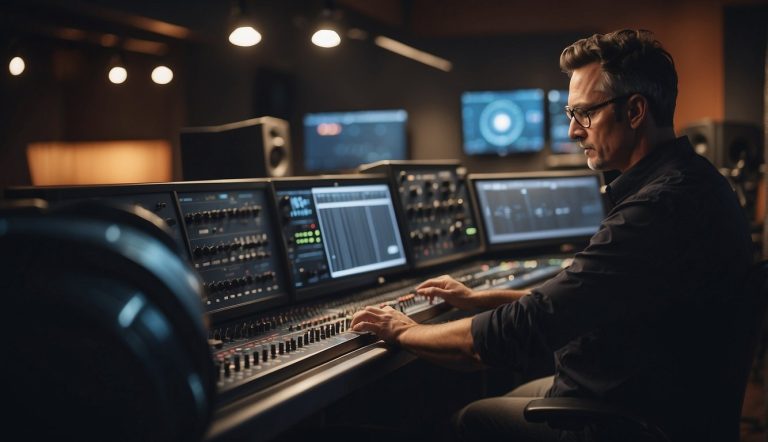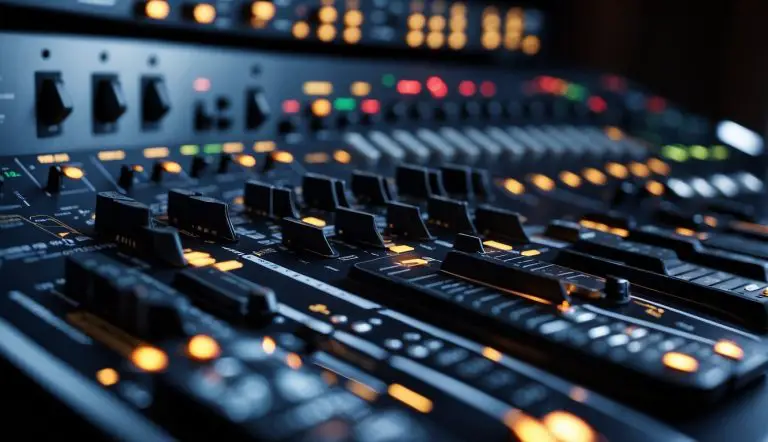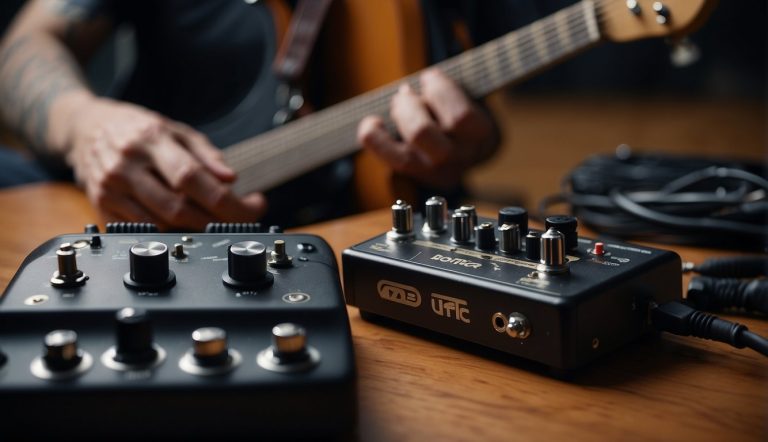Different Types of Amp Devices: A User’s Guide to Selection and Usage
When exploring the world of audio and music, understanding the various types of amplifier devices is crucial. As a musician or audio enthusiast, I’ve learned that amplifiers, or amps as they are commonly known, are the backbone of any great audio setup. They not only increase the volume of sound but also enhance its clarity and quality.
From the operational amplifiers found in complex electronic circuits to the esteemed guitar amp, each type serves a distinct purpose and comes with its own set of rules for use.
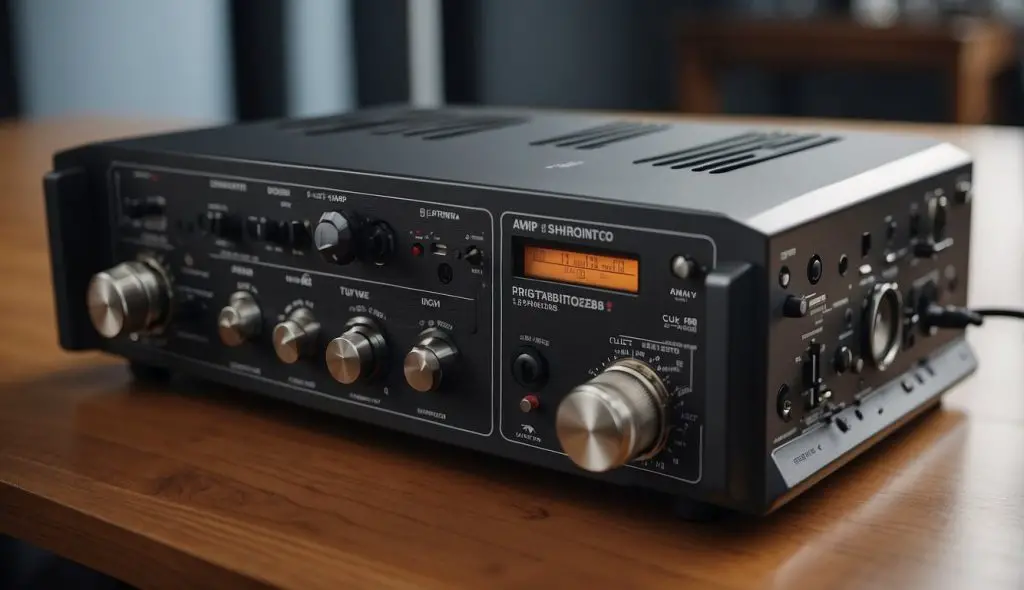
For instance, guitar amps are essential for translating the sound of an electric guitar or bass into loud and clear audio that can be heard by an audience or for recording purposes. As a guitarist, I have witnessed how choosing the right amp and understanding its basic functions can dramatically alter the tone and quality of the music produced.
Additionally, the integration of technology in modern amps allows for a range of effects and settings that can be adjusted to achieve the desired sound. Knowing how to use and take care of these devices ensures they last longer and continue to provide the best sonic experience.
Key Points
- Amplifiers increase and enhance the sound’s volume and quality.
- Selecting the right guitar amp is pivotal for achieving the optimal tone.
- Proper maintenance and usage ensure an amp’s longevity and performance.
Table of Contents
What Are The Guitar Amp Basics?
Guitar amplifiers are essential for projecting the sound of an electric guitar or electric-acoustic guitar. I’m excited to walk you through the different types of guitar amplifiers, as well as their key components.
Types of Amplifiers
In my experience, there are primarily three types of guitar amplifiers:
- Tube Amps: Also known as valve amps, they utilize vacuum tubes to amplify the sound. These amps are revered for their warm, rich tones and have been a staple in the music industry for decades.
- Solid-State Amps: These rely on transistors for their sound amplification. They are known for their reliability, durability, and consistency in sound quality.
- Hybrid Amps: As the name suggests, hybrid amps combine the technologies of tube and solid-state amplifiers, typically using a tube preamp with a solid-state power amp.
Each type of amplifier brings its own unique qualities to the table, and my choice among them usually depends on the desired tone and performance requirements.
Components of an Amp
Understanding the components of a guitar amplifier is key to harnessing its full potential:
- Preamp: It’s where the initial sound amplification happens, and tone shaping occurs. This can include bass, mid, and treble controls.
- Power Amp: This part of the amp further amplifies the signal from the preamp to a level that can drive the speakers.
- Speakers: They convert the amplified electrical signal into sound. The size and the number of speakers can greatly affect the amplifier’s tone.
Through personal trial and error, I’ve learned that the synergy between these components fundamentally defines the character and quality of the sound produced by an amp. It’s crucial to consider all these aspects when selecting an amp for your specific needs.
How to Choose the Right Amp for Your Guitar
When I’m selecting an amp for my guitar, I consider both the type of guitar I have and the style of music I want to play. These factors influence the amp’s characteristics, ensuring the best match for my sound aspirations.
Considerations Based on Guitar Type
Electric Guitar: If I’m using an electric guitar, I typically look for an amp that can accurately translate its tonal qualities. Electric guitars with single-coil pickups tend to sound brighter, so I might choose an amp with a clear high-end response. Guitars with humbucker pickups, on the other hand, have a fuller sound that’s well-suited to amps with a robust mid-range.
Bass: For bass guitars, the priority is on low-end clarity. I pick an amp that offers a strong and clean bass response without distortion. Since bass frequencies require more power, a higher wattage amp could be beneficial to maintain a clean sound even at higher volumes.
Impact of Music Style on Amp Choice
Jazz Music: My preference for jazz is an amp that delivers a warm, clean sound. I lean towards tube amps because they provide that smooth tonality synonymous with traditional jazz guitar. Lower wattage amps usually suffice here, as they break up at higher volumes, offering that natural, soft clipping that jazz guitarists often cherish.
Metal Music: When I play metal, I need an amp that can handle high gain without losing clarity. Solid-state amps, or digital modeling amps with built-in effects, are well-suited for this genre, as they can offer the aggressive distortion that metal demands. I also pay attention to an amp’s ability to handle low tunings and complex overtones, which are common in metal music.
How to Get the Best Tone and Effects
When I’m looking to craft the perfect guitar tone, I focus on two main elements: EQ settings that shape the tone and the effects that add character and depth to the sound.
Tone-Shaping with EQ and Settings
The EQ on my amplifier is the most direct tool I use for tone-shaping. I pay close attention to:
- Low Frequencies: To add warmth and fullness.
- Mid Frequencies: Manipulation here can either cut through a mix or warm up the sound.
- High Frequencies: These can add sparkle and definition to my guitar sound.
I find that a clean tone serves as a great canvas for understanding EQ settings. For a cleaner sound, I typically set my amplifier to a flat EQ and then adjust in small increments, listening for the clarity of notes and how my guitar responds.
Adjusting the bass, mid, and treble knobs incrementally helps me find the sweet spot where my guitar’s natural sound resonates best.
When I want to highlight harmonics and overtones, I might push the mids slightly, as overdrive on these frequencies can enhance a guitar’s harmonic qualities.
Utilizing Effects and Pedals
Effects and pedals provide vast options for tonal diversity. Here’s a straightforward method to incorporate them:
- Overdrive/Distortion Pedals: For grit and power, I add overdrive for a bluesy crunch or distortion for heavier, aggressive tones. I use these sparingly to maintain the integrity of my guitar’s natural tone.
- Modulation Effects: Incorporating chorus, flanger, or phaser pedals can create a sense of depth and movement in my sound.
I often experiment with the order of my effects chain to see how the pedals interact with each other and the resulting tone. With overdrive, for example, placing it before a chorus pedal gives me a more pronounced effect, whereas after might yield a subtler sound.
In using these tools, my goal is always to achieve a distinct tone that serves the music I’m playing. I take time to experiment with different settings and pedal combinations to discover what sounds best to my ears.
How to Look After Your Amp
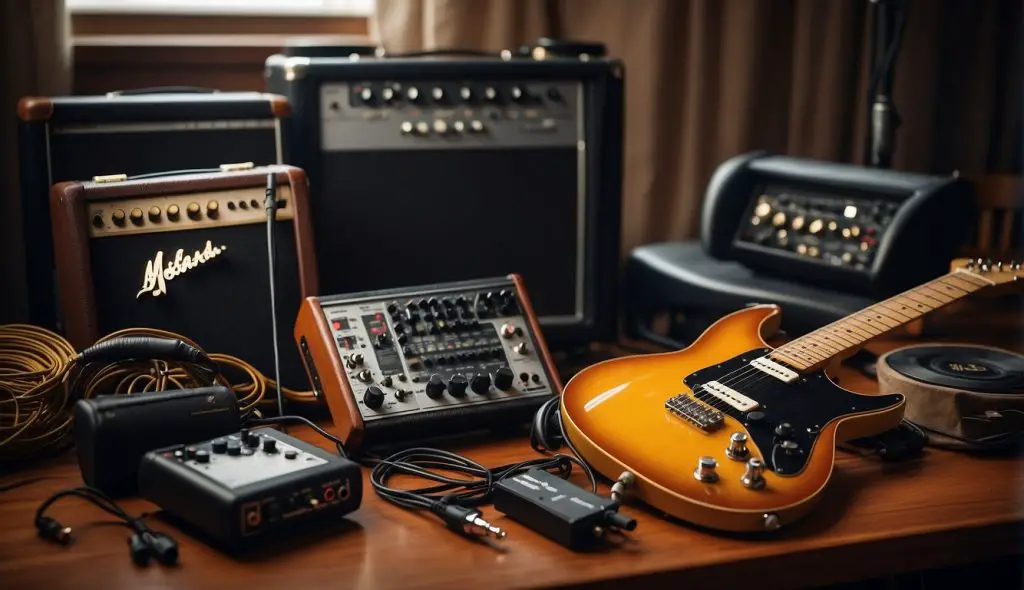
Maintaining your amp isn’t just about preserving its condition; it’s also a way to ensure it performs at its best every time you use it. Here’s how I keep my amp in tip-top shape without incurring high maintenance costs:
- Regular Cleaning: I make sure to dust the exterior with a soft cloth. For the interior, especially if it’s a tube amp, I use a can of compressed air to gently remove dust from delicate parts like vacuum tubes.
| Preamp Tubes | Power Tubes |
|---|---|
| Check for microphonics | Inspect for wear/tear |
| Gently clean contacts | Replace in matched sets |
- Visual Inspections: Frequently, I inspect the amp for any signs of damage or wear. I pay special attention to the power tubes, which can often wear out faster than preamp tubes.
- Maintain Optimal Environment: To keep my amp durable, I store it in a place where temperature and humidity are stable because extreme conditions can cause damage over time.
- Handle with Care: Transporting your amp carefully is crucial. I always ensure I never drop it or knock it against hard surfaces.
- Regular Audits of Features & Functions: Every once in a while, I check all the features of my amp to confirm they’re working correctly.
If ever my amp needs repairing, I consult a professional. Trying to fix complex electronic devices on my own can lead to further damage or even personal injury.
Frequently Asked Questions
Navigating the world of amplifiers can be complicated, but I’m here to help clarify some common queries so you can make an informed decision.
What are the key differences between Class A, B, AB, and D amplifiers?
Class A amplifiers provide constant output but are less efficient. Class B amplifiers are more efficient but can introduce distortion at the crossover point of the waveform. Class AB combines both to provide efficiency with less distortion. Class D amplifiers are the most efficient and are used in portable applications but may not always deliver the same audio fidelity as Class A or AB.
How do I choose the right amplifier for my speakers?
Match the amplifier power output to your speaker’s power rating and impedance. Ensure the amplifier provides enough power for your speakers without greatly exceeding their maximum capacity to avoid damage.
Can you explain how to use a Class A amplifier with a guitar?
Connect your guitar to the input jack of the Class A amplifier. Adjust the volume and tone controls to suit your preference. Class A amplifiers are valued for their clear, rich sound and responsiveness to playing dynamics.
What are the characteristics of a Class C amplifier and its typical uses?
Class C amplifiers are highly efficient but produce a lot of signal distortion, so they’re not suitable for audio applications. Instead, they’re commonly used in radio frequency (RF) transmission, such as in amateur radio setups.
How do operational amplifiers work, and what are their main types?
Operational amplifiers, or op-amps, are used to amplify voltage signals. They have two inputs: inverting and non-inverting.
The main types are voltage-feedback op-amps, which are versatile, and current-feedback op-amps, which have higher slew rates suitable for high-speed applications.
What should I consider when selecting an amplifier for my home audio system?
Consider the amplifier’s power output and channels. For connectivity, look for options like Bluetooth or Wi-Fi. Also, make sure the amplifier pairs well with your speakers and matches your listening preferences for sound quality.

